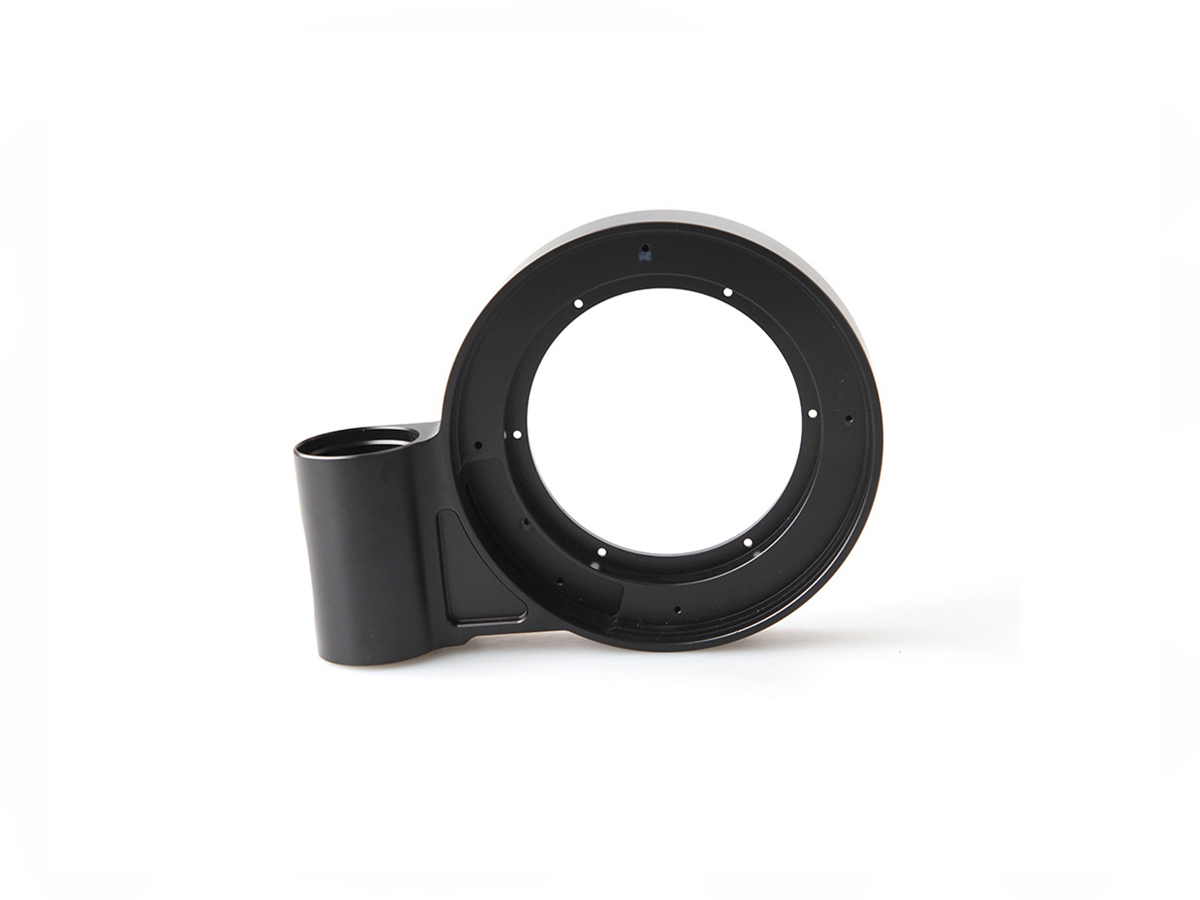High-Quality CNC Machining for Electronic Device Components
Introduction to CNC Machined Components for Electronic Devices
The electronic device industry continuously pushes the boundaries of precision, reliability, and compact design. To meet these stringent requirements, high-quality CNC machining is essential. Utilizing advanced materials such as aluminum alloys, stainless steel, copper, and engineering plastics, CNC machining ensures tight tolerances, superior finishes, and exceptional component consistency. Components typically produced through CNC machining include electronic casings, heat sinks, connectors, sensor housings, RF shielding, and precision internal parts for devices like smartphones, computers, wearables, and advanced IoT systems.
Professional CNC machining services offer unmatched precision, enabling innovative and compact designs necessary in today's electronics market.
Material Performance Comparison for Electronic Components
Material | Tensile Strength (MPa) | Thermal Conductivity (W/m·K) | Machinability | Corrosion Resistance | Typical Applications | Advantages |
|---|---|---|---|---|---|---|
310 | 167 | Excellent | Excellent (>800 hrs ASTM B117) | Casings, heat sinks | Lightweight, high thermal efficiency | |
620 | 16.2 | Excellent | Superior (>1000 hrs ASTM B117) | Connectors, durable housings | High strength, corrosion resistance | |
250-300 | 391 | Excellent | Good (>500 hrs ASTM B117) | Heat sinks, conductive components | Superior electrical and thermal conductivity | |
40-50 | 0.25 | Excellent | Good chemical resistance | Sensor housings, internal parts | Lightweight, cost-effective |
Material Selection Strategy for Precision Electronic Components
Choosing appropriate materials ensures components meet critical electronic device standards:
Aluminum 6061 (Thermal Conductivity: 167 W/m·K) is ideal for electronic device casings and heat sinks due to its excellent machinability, lightweight structure, and superior thermal dissipation, ensuring optimal device cooling and reliability.
Stainless Steel SUS303 (Tensile Strength: 620 MPa) provides robust durability, excellent corrosion resistance (>1000 hrs ASTM B117), and mechanical strength, suitable for connectors, structural frames, and components requiring high precision and longevity.
Copper C101 (Thermal Conductivity: 391 W/m·K) is highly recommended for heat sinks, connectors, and electronic contacts, delivering outstanding electrical and thermal conductivity essential for efficient electronic performance and effective thermal management.
ABS Plastic offers cost-effectiveness, ease of machining, and good chemical resistance, suitable for internal parts, sensor housings, and insulating components, ensuring performance reliability within compact designs.
CNC Machining Processes for Electronic Device Components
CNC Machining Process | Dimensional Accuracy (mm) | Surface Roughness (Ra μm) | Typical Applications | Key Advantages |
|---|---|---|---|---|
±0.005 | 0.2-0.8 | Complex casings, precision parts | High accuracy, complex geometries | |
±0.005-0.01 | 0.4-1.2 | Cylindrical connectors, contacts | Precise rotational features | |
±0.01-0.02 | 0.8-1.6 | Mounting holes, precision ports | Accurate hole placement | |
±0.002-0.005 | 0.1-0.4 | Surface-sensitive components | Exceptional surface smoothness |
CNC Process Selection Strategy for Electronic Components
Selecting suitable CNC machining methods maximizes the precision and efficiency required for electronic components:
5-Axis CNC Milling achieves intricate geometries and tight tolerances (±0.005 mm), crucial for compact casings, custom heat sinks, and precision internal parts of high-end electronics.
Precision CNC Turning ensures excellent symmetry and accuracy (±0.005 mm), vital for connectors, cylindrical contacts, and mechanical interface components in electronic assemblies.
CNC Drilling guarantees precise, repeatable hole locations (±0.01 mm), essential for mounting electronic parts and maintaining alignment in tightly packaged electronic devices.
CNC Grinding delivers extremely fine surface finishes (Ra ≤0.4 µm) and dimensional tolerances (±0.002 mm), ideal for highly sensitive electronic components where superior surface quality is paramount.
Surface Treatment Performance for Electronic Components
Treatment Method | Surface Roughness (Ra μm) | Corrosion Resistance | Hardness (HV) | Typical Applications | Key Features |
|---|---|---|---|---|---|
0.4-1.0 | Excellent (>1000 hrs ASTM B117) | 400-600 | Aluminum casings, heat sinks | Enhanced durability, insulation | |
0.1-0.4 | Superior (>1000 hrs ASTM B117) | N/A | Stainless steel parts, connectors | Ultra-smooth, corrosion-resistant finish | |
0.5-1.0 | Good (>500 hrs ASTM B117) | Moderate | Steel parts, shielding components | Conductive coating, aesthetic appeal | |
0.2-0.8 | Excellent (>1000 hrs ASTM B117) | N/A | Stainless steel connectors, hardware | Superior corrosion resistance |
Surface Treatment Selection for Electronic Device Components
Appropriate surface treatments enhance the performance, durability, and electrical properties of electronic components:
Anodizing provides high corrosion resistance (>1000 hrs ASTM B117) and improved electrical insulation, ideal for aluminum heat sinks and casings.
Electropolishing achieves a mirror-like, corrosion-resistant finish (Ra ≤0.4 µm) ideal for precision stainless steel connectors and components requiring a clean surface for electrical conductivity and reliability.
Black Oxide Coating offers moderate corrosion resistance and improved surface conductivity, making it suitable for shielding components, grounding plates, and steel-based internal parts.
Passivation significantly enhances stainless steel corrosion resistance (>1000 hrs ASTM B117), ensuring long-term performance and reliability of precision connectors and fittings.
Typical Prototyping Methods for Electronic Components
CNC Machining Prototyping: Precise functional prototypes (±0.005 mm) for rigorous testing and validation.
Rapid Molding Prototyping: Quick-turn, accurate prototypes ideal for consumer electronics evaluation and ergonomic testing.
3D Printing Prototyping: Cost-effective iterative prototyping (±0.1 mm) suitable for initial design validation.
Quality Assurance Procedures
CMM Inspection (ISO 10360-2 certified): Ensures precision dimensional tolerances (±0.005 mm).
Surface Roughness Verification (ISO 4287): Confirms surface quality standards between Ra 0.1–1.6 µm.
Corrosion Resistance Testing (ASTM B117): Validates protective finishes exceed 800 hrs resistance.
Visual & Cosmetic Inspection (ISO 2859-1, AQL 1.0): Guarantees aesthetic and functional perfection.
ISO 9001:2015 Documentation: Ensures traceability, compliance, and production integrity.
Related FAQs:
Why choose CNC machining for electronic components?
Which materials best suit electronic device machining?
How do surface treatments improve electronic parts?
What prototyping methods are best for electronic devices?
What quality standards are essential for CNC electronic components?

